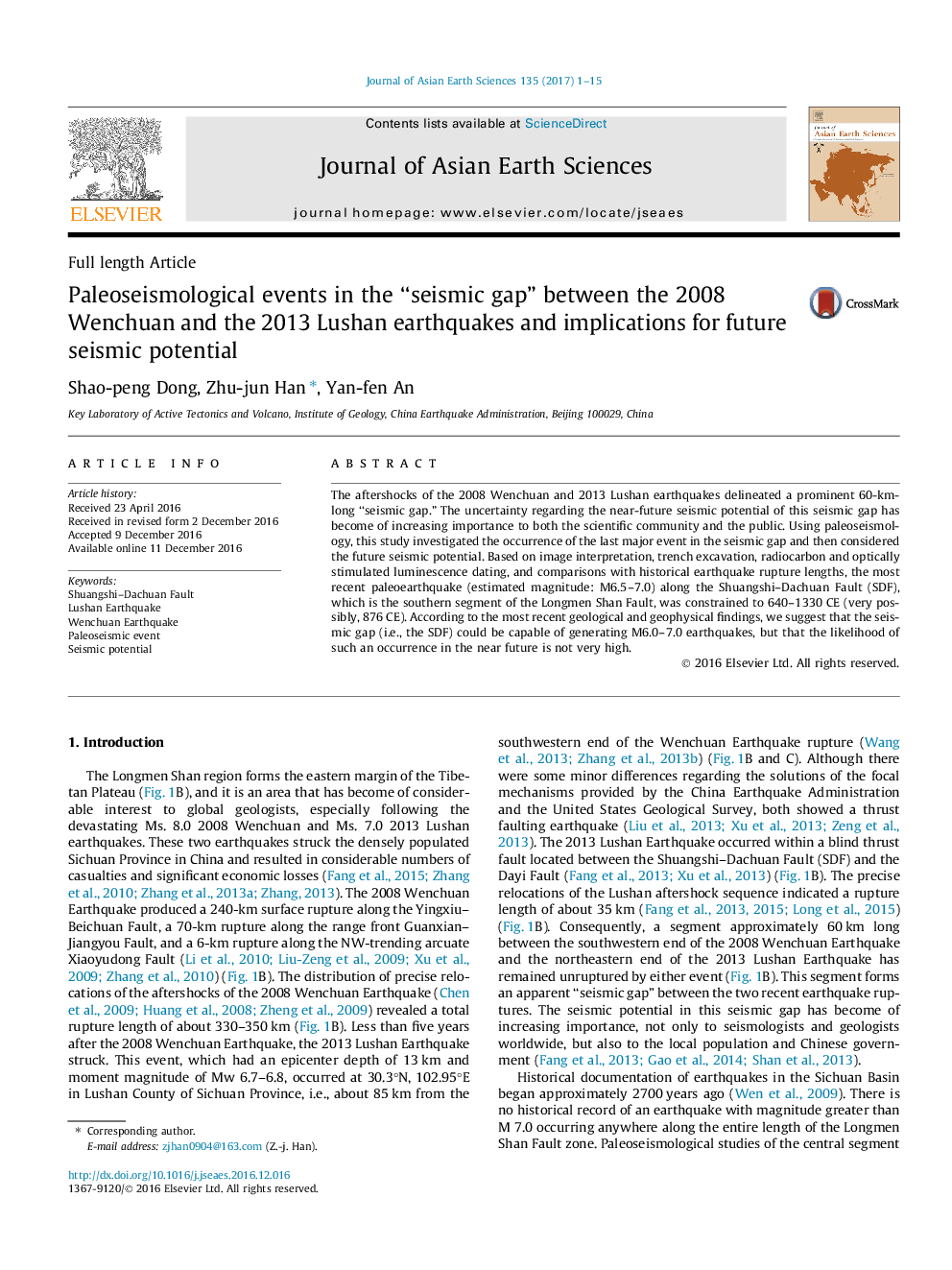| Article ID | Journal | Published Year | Pages | File Type |
|---|---|---|---|---|
| 5786098 | Journal of Asian Earth Sciences | 2017 | 15 Pages |
â¢The most recent paleoearthquake at Qingshiping section on the Shuangshi-Dachuan Fault is constrained to AD 640-1330.â¢Paleoseismic evidence suggests the seismic gap between the 2008 Wenchuan and 2013 Lushan earthquakes could generate earthquake of M6.0-7.0, but that the likelihood of the occurrence of such an earthquake in the near future is not great.
The aftershocks of the 2008 Wenchuan and 2013 Lushan earthquakes delineated a prominent 60-km-long “seismic gap.” The uncertainty regarding the near-future seismic potential of this seismic gap has become of increasing importance to both the scientific community and the public. Using paleoseismology, this study investigated the occurrence of the last major event in the seismic gap and then considered the future seismic potential. Based on image interpretation, trench excavation, radiocarbon and optically stimulated luminescence dating, and comparisons with historical earthquake rupture lengths, the most recent paleoearthquake (estimated magnitude: M6.5-7.0) along the Shuangshi-Dachuan Fault (SDF), which is the southern segment of the Longmen Shan Fault, was constrained to 640-1330 CE (very possibly, 876 CE). According to the most recent geological and geophysical findings, we suggest that the seismic gap (i.e., the SDF) could be capable of generating M6.0-7.0 earthquakes, but that the likelihood of such an occurrence in the near future is not very high.
Graphical abstractDownload high-res image (466KB)Download full-size image
